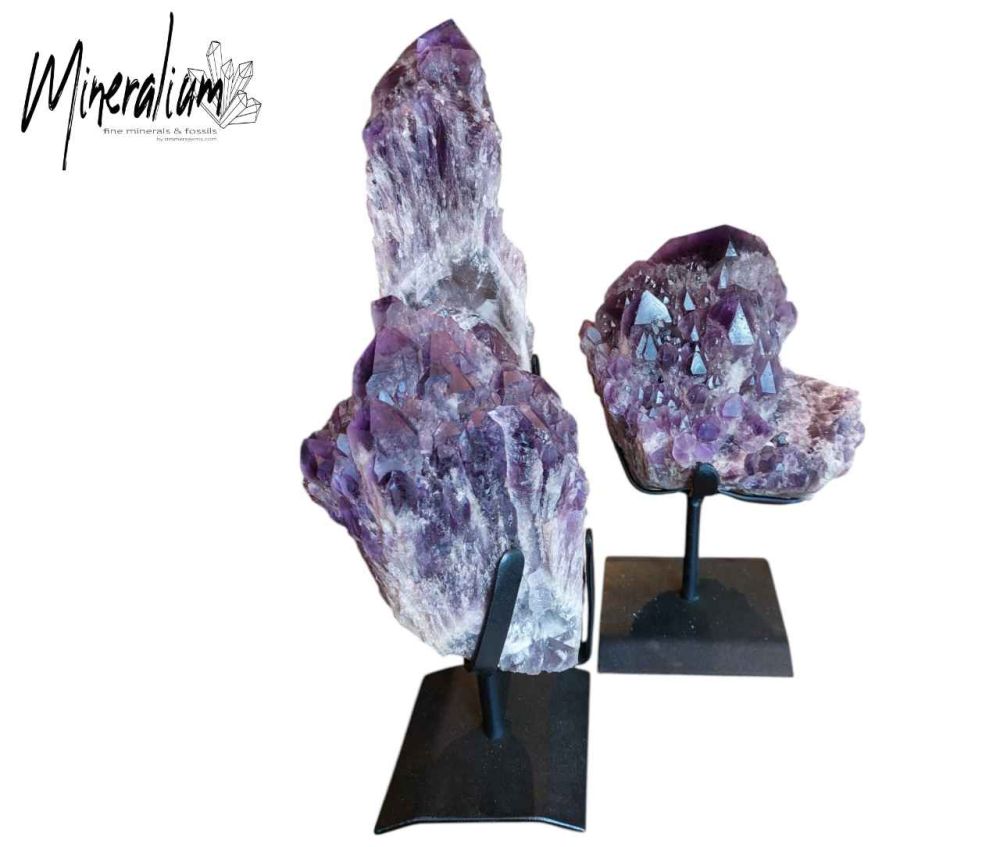We use cookies to make your experience better.
TimmersGems has a new website, existing customers also need to register again.
Trapezium amethyst (0.7-5 kg pieces) “Cathedral amethyst” Berjinho das Amethysta in Brazil.
This type of amethyst has only been found once, in 2018, and never again until now.
Availability:
In stock
SKU
122266
- Buy 25 for €49.00 each and save 17%
Trapezium amethyst (0.7-5 kg pieces) “Cathedral amethyst” Berjinho das Amethysta in Brazil. is available to buy in increments of 10
Amethyst is a violet variety of the mineral quartz (SiO₂) and is the most sought-after stone from the quartz group. Etymology The name comes from the Greek αμεθυστος (amethystos). Amethyst was already known to the Egyptians, Etruscans and Romans, and Pliny the Elder already described amethyst. In ancient China, small gems were cut from amethyst. In the Middle Ages, amethyst was also highly valued in Europe. It was called the bishop's stone because it used to be a popular gemstone for church dignitaries, and it was said to have magical powers. It was the symbol of lovers, the stone of temperance, and a protector against sorcery and witchcraft. Jacob van Maerlant explains that the stone drives away drunkenness. It has been assumed that the Greek name would mean "against intoxication": one would not get drunk from wine drunk from a cup made of amethyst. Origin: metamorphic, hydrothermal, alluvial The crystals always grow on a substrate. The prisms are often weakly developed, and therefore the crystal points of spitamethyst dominate; here the colour is also the strongest. These parts are knocked off, that is, broken off for further use. By firing at a temperature between 470 and 750 degrees, light yellow, reddish brown, green or colourless varieties are created. There are amethysts that gradually fade in daylight. The original colour can be restored with radium irradiation. The colour is caused by iron in combination with ionising radiation. Amethyst is less attractive in artificial light. Occurrence Brazil could already boast of its amethyst finds in the Middle Ages; they are mined in Bahia, Minas Gerais and Mato Grosso, among other places. Recently, the so-called ametrine has been mined in Bolivia, an amethyst-citrine, in which the violet and yellow colours alternate, but the transition between the colours is sharply defined. Amethysts are also known in the United States, namely in Montana, Maine, Georgia and Arizona. Canada, Mexico, Bolivia, India, Myanmar, Japan, China, Korea, Sri Lanka, Zimbabwe, Congo and Australia are also important producers. Russia finds amethyst in the Urals, Yakutsk, and on the Kola Peninsula. Amethysts are also found in Armenia, Germany, the Czech Republic, Slovakia, Bulgaria, Switzerland and Ireland. Amethyst rarely forms larger, pure crystals. The British Museum has a unique cut stone of 343 carats. Other, smaller stones weigh less; they usually come from Brazil. The Smithsonian Institution in Washington D.C. even has a cut amethyst from Brazil of 1362 carats and one from North Carolina of 202.5 carats. Amethysts are often used in state jewels, like Catherine the Great's and the British crown's sceptres.
| Dimensions | 0.7-5 kilo |
|---|---|
| Country of Manufacture | Brazil |










